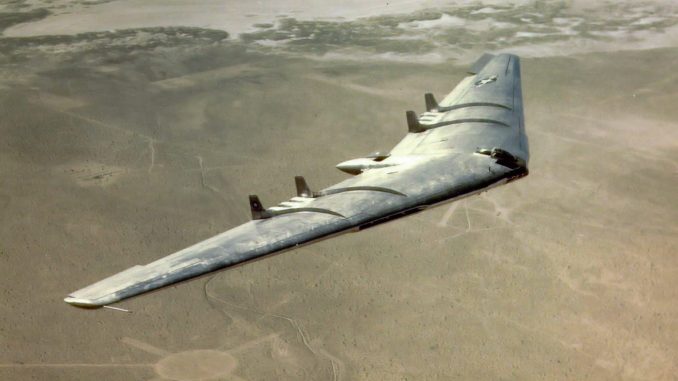
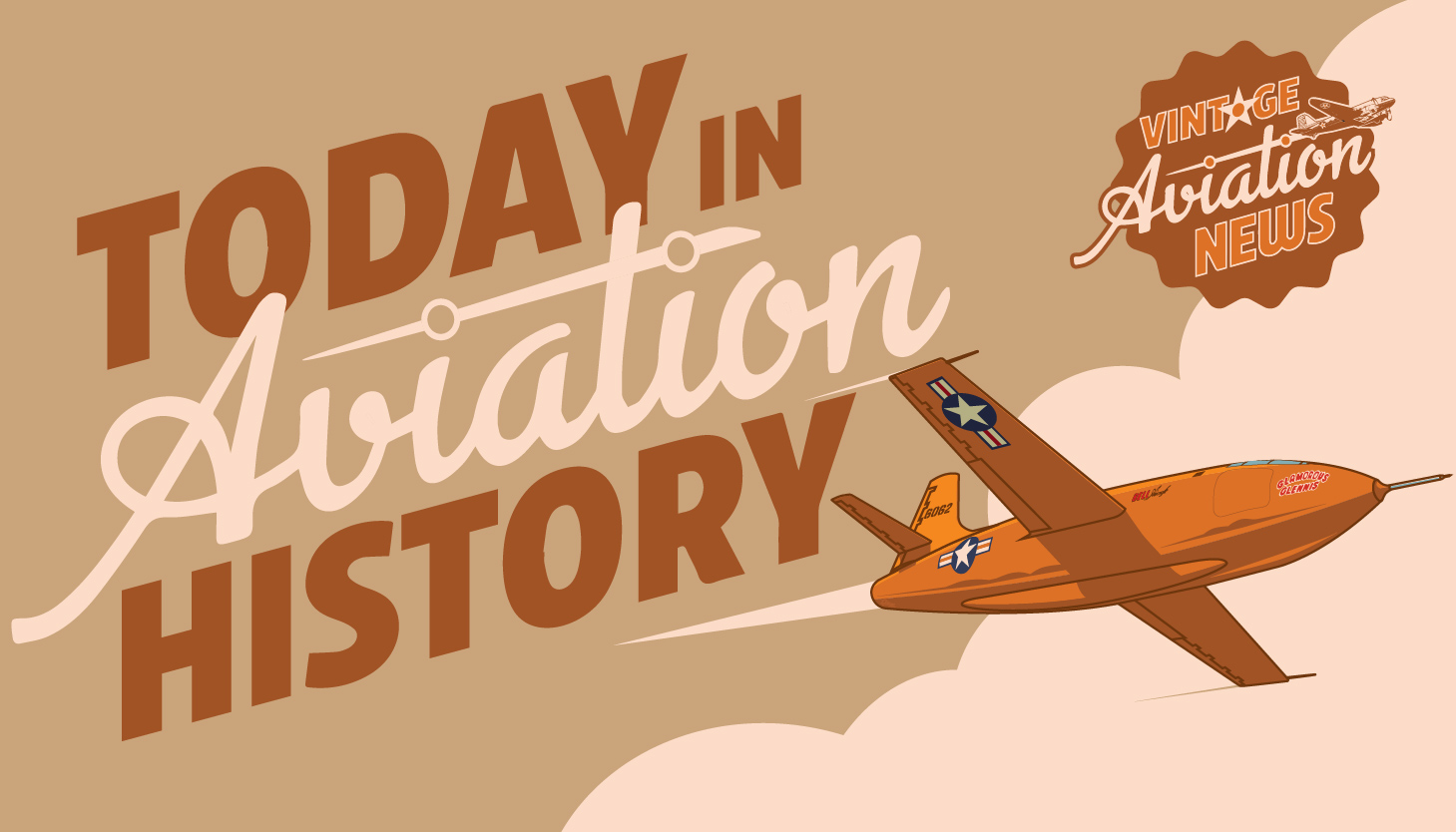
On October 21, 1947, the Northrop YB-49 took its first flight and started a chain reaction of inspiration, setbacks, and necessities that later gave rise to future world-class bombers like the B-2 stealth bomber. The YB-49 was an American prototype jet-powered heavy bomber developed shortly after World War II by the Northrop Corporation. This turbojet-powered version for the United States Air Force was derived from the earlier piston-engine Northrop XB-35 and YB-35. The two YB-49s that were built were actually converted from the previous YB-35 test aircraft. However, the YB-49 never entered production due to a preference for more conventional piston-engine designs like Convair B-36. The aircraft still inspired for future bomber designs much later in the future in early 1990s.
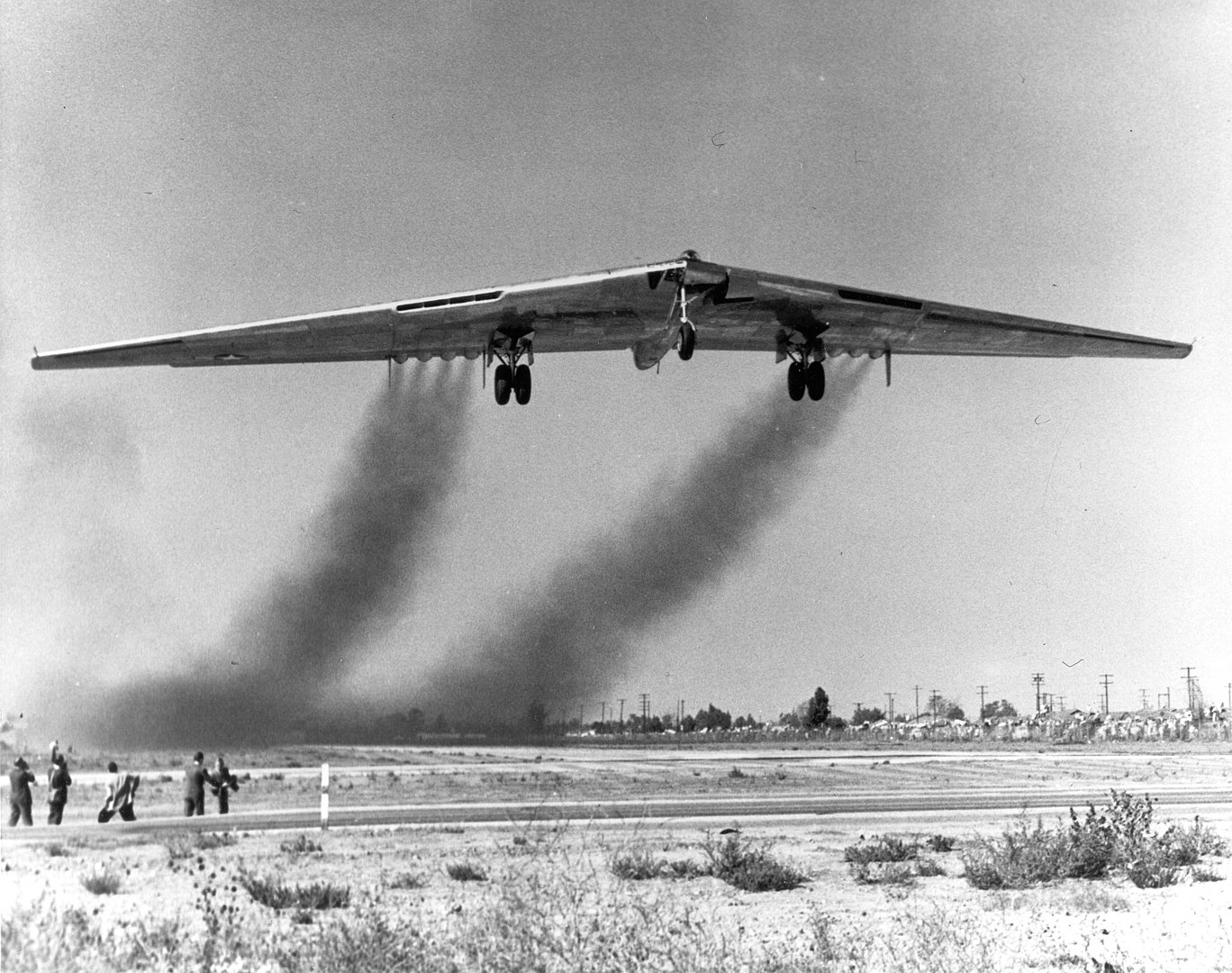
Winging It!
The flying wings design, initially part of the propeller-driven XB-35 project, which was canceled in May 1944, remained of interest to the Air Force. The persevered interest and curiosity associated with this particular wing design led to the development and testing of a single YB-35A. The Air Force ordered two YB-35 airframes that were converted to jet propulsion designs and were designated later as YB-49s. The first flight of the converted aircraft took on October 22, 1947, from Northrop Airfield in Hawthorne, California. The test flight was successful, and the aircraft proved itself to be more promising than its piston-engine predecessor. It also set an unofficial endurance record by staying above 40,000 ft for 6.5 hours. One of the key features of the YB-49 that later influenced future stealth technology, especially the B-2 bomber, was a demonstration of a small radar cross-section during its flight tests. It indeed remained an aircraft ahead of its time.
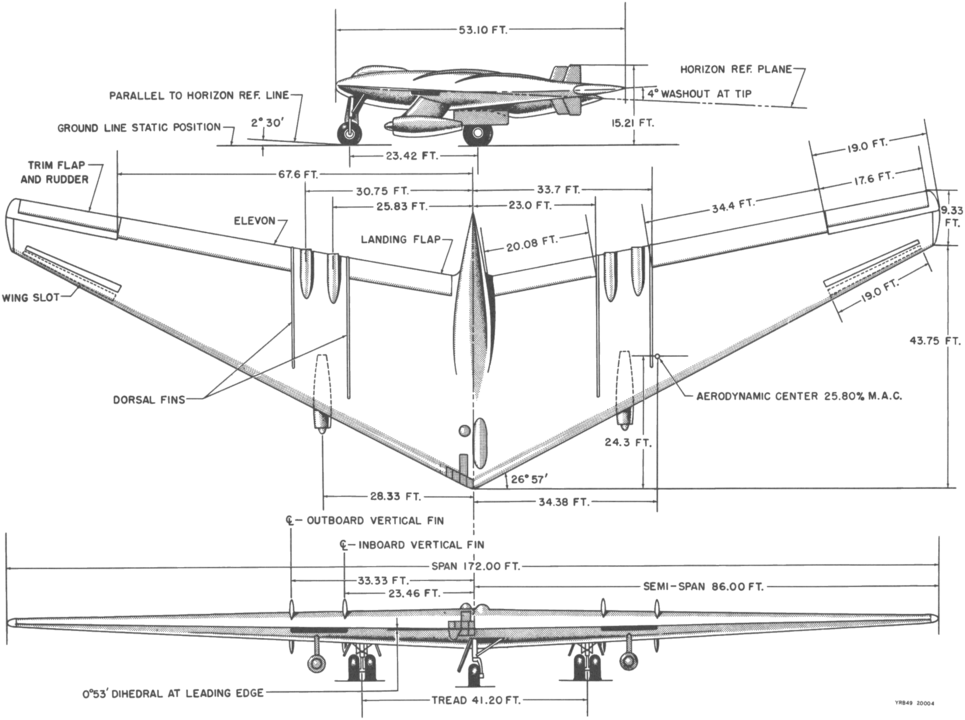
The 1948 Incident
The second YB-49, piloted by Major Daniel A. Forbes and Captain Glen W. Edwards in 1948, faced a major incident while conducting stall recovery performance at 40,000 ft north of Muroc Air Force Base, California. The aircraft experienced a catastrophic structural failure, which resulted in its outer wing panels tearing off. The YB-49 crashed approximately 10 miles east of Mojave Desert, and unfortunately, all crew members were killed in the crash, including the flight engineers. A few months after the crash, the last of the two YB-49s was destroyed during a taxiing accident, and the entire project was cancelled shortly thereafter. Hence, the last operational YB-49 prototype was destroyed on March 15, 1950, during these high-speed taxi trials at Muroc Field. The nose wheel encountered severe vibrations and collapsed, leading to the complete loss of the aircraft in a fire.
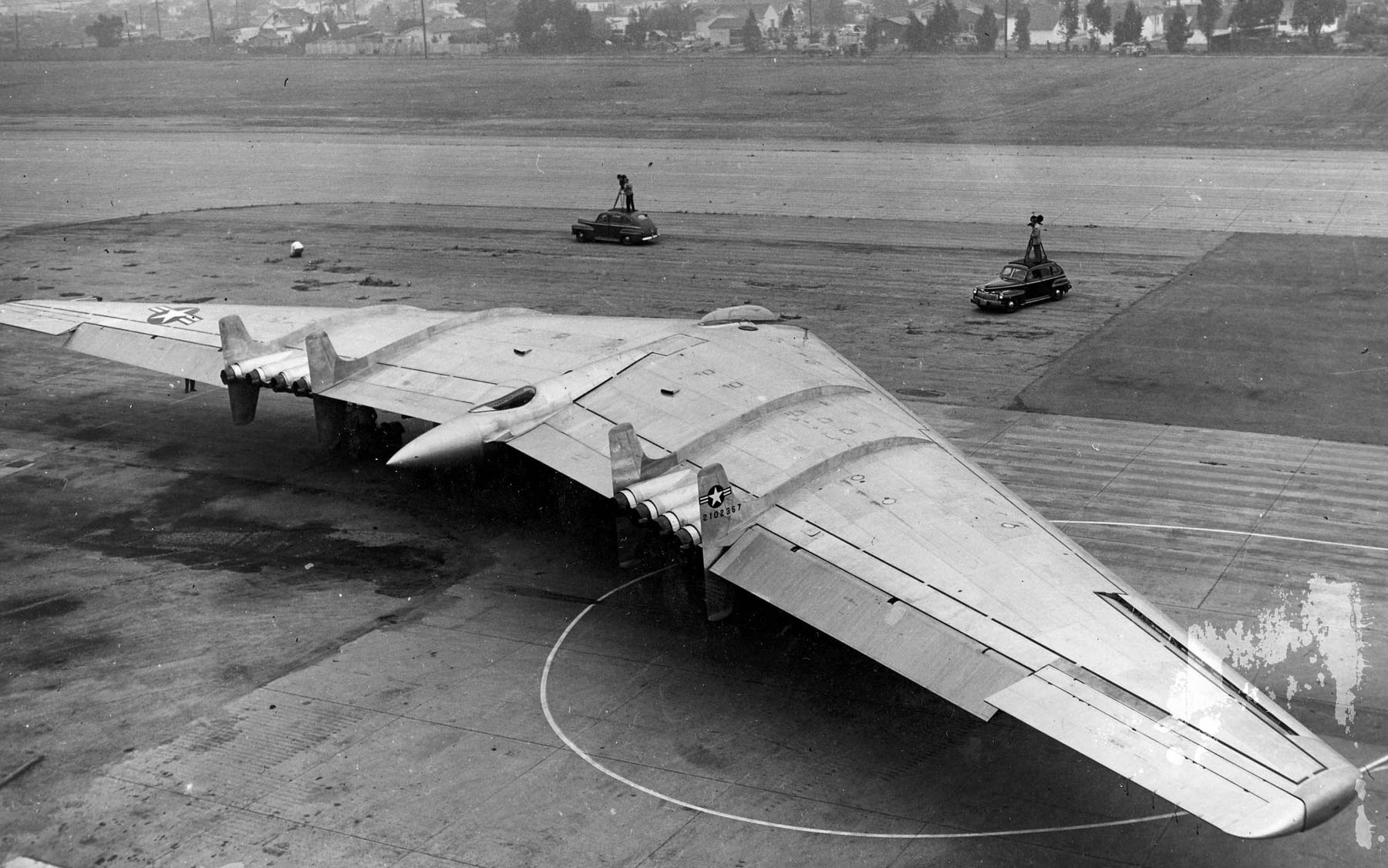
Devil’s in the Details
The YB-49 design aimed to create a highly efficient aircraft with low drag by its rare all-wing configuration. However, the design faced major stability issues under various flight conditions, and after the two tragic incidents, it took another 41 years for the flying wing concept to see success. The project was finally achieved by a later design, the Northrop B-2 Spirit, after several changes, including the engines. The YB-49 design featured four small vertical fins that were added to improve yaw stability. Components such as the crew compartment, engines, fuel, landing gear and armament were housed within the wings. The air intakes for the turbojet engines were also located on the leading edge of the wing, with the exhaust nozzles at the trailing edge. The aircraft was powered by eight General Electric-designed Allison J35-A-15 turbojet engines, and it had a maximum speed of 499 miles per hour at 18,000 feet. However, the design faced several challenges, especially the vertical fins, which were too small and led to instability. The aircraft’s instability made it challenging to maintain course or altitude, indicating a need for a stability augmentation system. These minor issues caused some major incidents and eventually led to a complete cessation of the project.
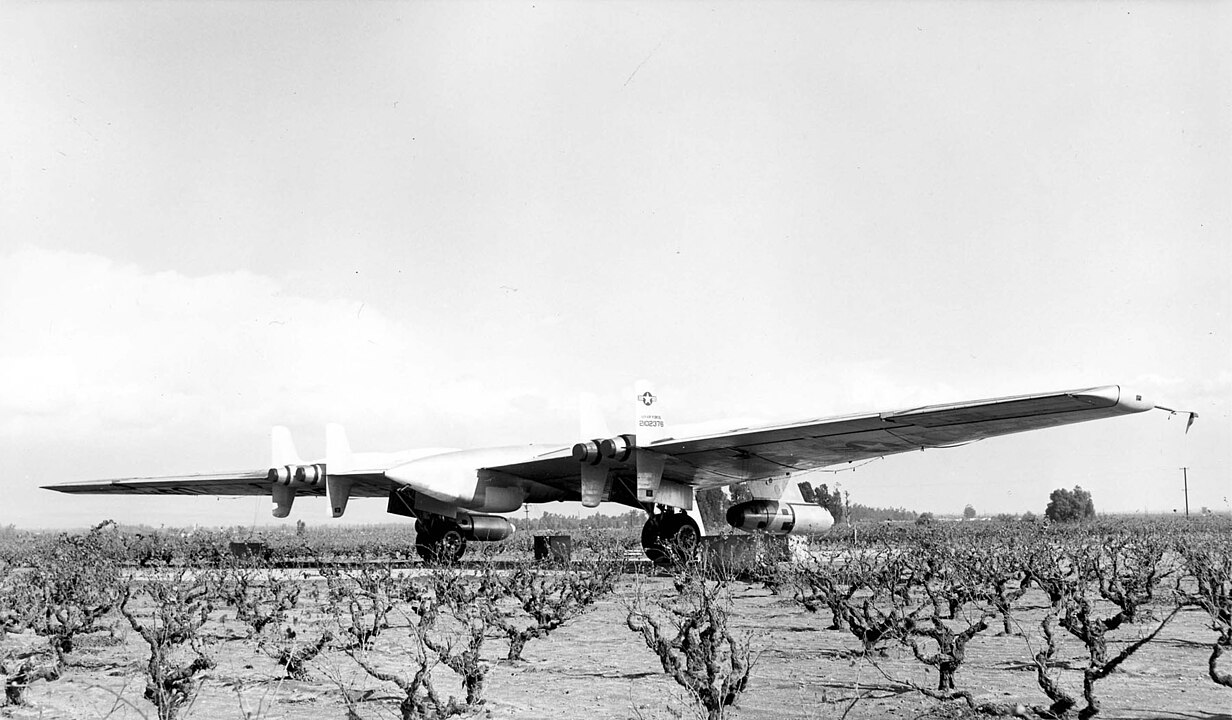
The Aftermath
The YB-49 program eventually ended but greatly contributed to the development of the B-2 bomber. In February 1981, Jack Northrop secured Northrop Corporation’s future bid for the B-2, reflecting on his long-held belief in the potential of the flying wing concept. The B-2 bomber was publicly unveiled for the first time in 1988. The conversion from piston engines to jet power significantly reduced the effective range of the YB-49, placing it in the medium-range bomber category. Technological challenges, alongside potential political influences, contributed to the cancellation of the Flying Wing program. The YB-49 was a revolutionary aircraft for its time, representing the cutting-edge aerodynamic design with its all-wing configuration aimed at minimizing drag and maximizing efficiency. The YB-49 symbolizes the struggles and triumphs of experimental aviation during the post-World War II era. Its ambitious design reflects the era’s innovative spirit and the challenges faced by pioneers like Jack Northrop, whose vision for an all-wing aircraft inspired future generations.
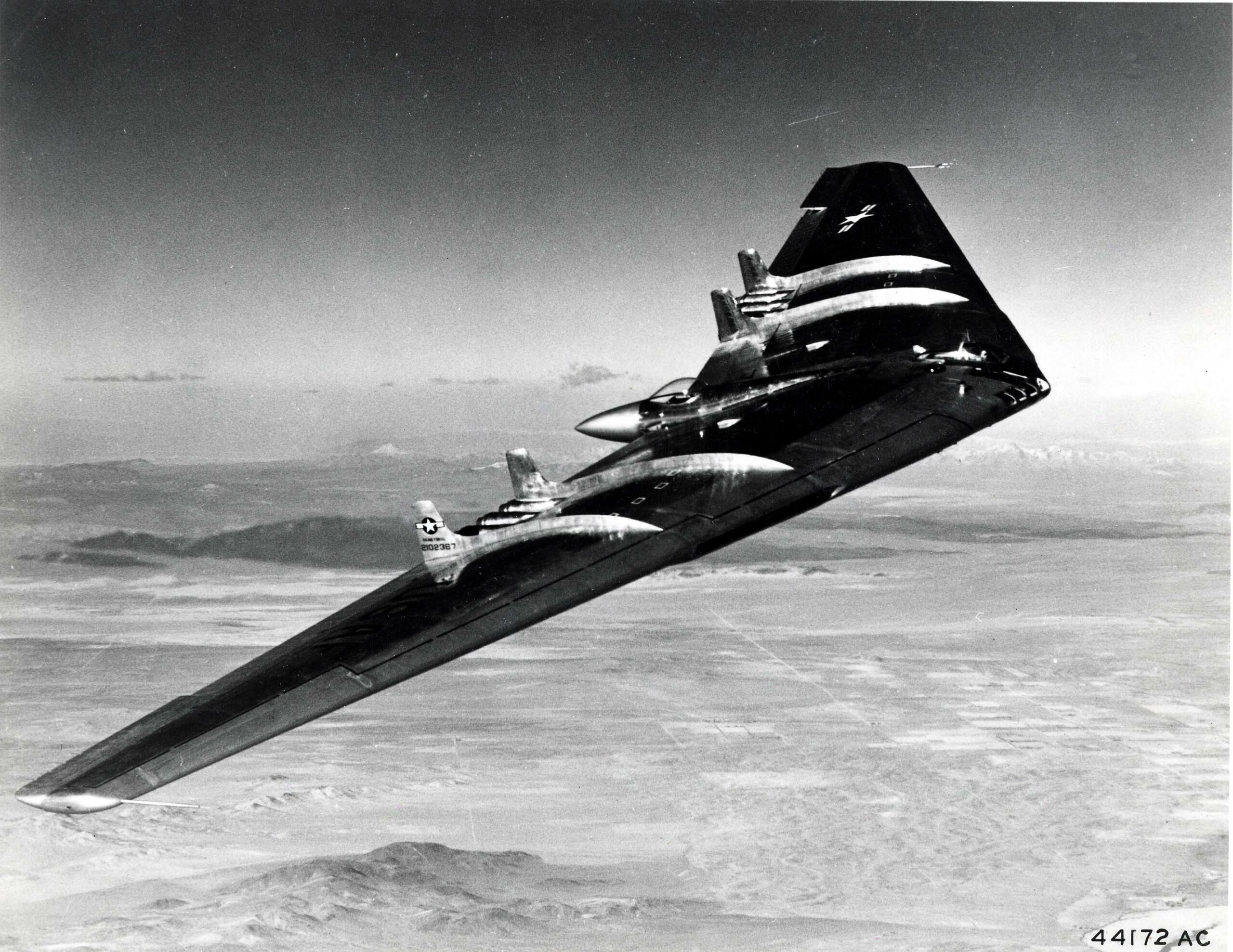
Today in Aviation History is a series highlighting the achievements, innovations, and milestones that have shaped the skies. All the previous anniversaries are available HERE.
Related Articles
"Haritima Maurya, pen name, ""Another Stardust,"" has been passionate about writing since her school days and later began sharing her work online in 2019. She was drawn to writing because of her love for reading, being starstruck by the art of expression and how someone can make you see and feel things exclusive to their experience. She wanted to be able to do that herself and share her mind with world cause she believes while we co exist in this beautiful world least we can do is share our little worlds within.
As a commercial pilot, Haritima balances her passion for aviation with her love for storytelling. She believes that, much like flying, writing offers a perspective beyond the ordinary, offering a bridge between individual experiences and collective understanding.
Through her work, ""Another Stardust"" aims to capture the nuances of life, giving voice to moments that resonate universally. "

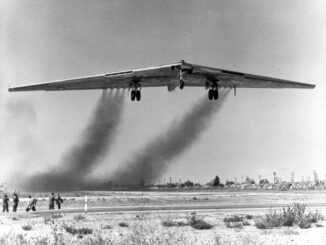




Why no mention of the WWII German designed ‘flying wing’ that the U.S. brought over after WWII to study?